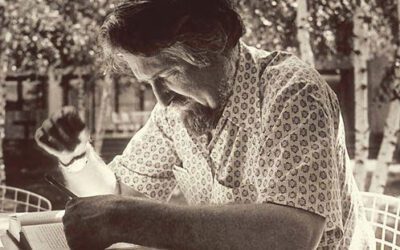
Who is Allan Shore?
Allan N. Schore, Ph.D. is a pioneering researcher and theoretician whose work has revolutionized our understanding of human development, the emergence of the self, and the process of therapeutic change. Drawing on cutting-edge research from neuroscience, attachment theory, developmental psychology, and psychoanalysis, Schore has crafted a compelling vision of how early relational experiences shape the development of the brain and the capacity for emotional regulation and interpersonal connection across the lifespan.
At the heart of Schore’s model is the idea that the self emerges out of the early attachment relationship between infant and primary caregiver. Through subtle, moment-to-moment exchanges of gaze, vocalization, and touch, the attuned caregiver helps regulate the infant’s internal psychobiological states, promoting the development of neural structures involved in self-regulation and interpersonal engagement. Conversely, chronic misattunement and unrepaired ruptures in the attachment bond can compromise the growth of these regulatory systems, setting the stage for later emotional and relational difficulties.
Schore’s work represents a groundbreaking synthesis of previously disparate fields, providing a powerful framework for understanding the complex interplay of biological, psychological, and social factors in shaping human experience. His ideas have profound implications not only for our understanding of development and psychopathology, but also for the conduct of psychotherapy and the cultivation of emotional wellbeing across the lifespan.
This paper provides an in-depth exploration of Schore’s key concepts and their evolution over the course of his career. Beginning with his early work on the neurobiology of attachment, we trace the development of his ideas through his later writings on the right brain, the origins of the self, and the psychoneurobiological underpinnings of the therapeutic process. Along the way, we highlight the central themes and implications of his model, with an eye towards their practical applications in clinical practice and beyond.
The Neurobiology of Attachment: Affect Regulation and the Origin of the Self
Schore’s journey into the realm of interpersonal neurobiology began with his groundbreaking 1994 book, Affect Regulation and the Origin of the Self. In this seminal work, Schore laid the foundation for his lifelong exploration of how early relational experiences shape the development of the brain and the emergence of the self.
Drawing on a vast array of research from neuroscience, developmental psychology, and psychoanalysis, Schore argued that the self is not a pre-given entity but an emergent property of the early attachment relationship. In the first years of life, the infant’s brain is not a self-contained unit but an “open system” that requires the caregiver’s participation for its growth and organization. Through a process of “affective synchrony,” the attuned caregiver intuitively matches the infant’s ever-shifting states of autonomic arousal, helping to regulate the baby’s internal physiological rhythms.
This dyadic regulation, Schore proposed, is the crucible in which the self first emerges. By providing a “holding environment” that keeps the infant’s arousal within an optimal range, the caregiver helps the developing brain learn to process and modulate affective states. Over time, these repeated experiences of attunement and coregulation are internalized, forming the basis for the child’s emerging capacity for self-regulation and emotional resilience.
Schore focused particularly on the development of the right brain, which he saw as the neurobiological substrate of the human unconscious and the locus of implicit relational knowing. The right brain, he noted, comes online earlier than the left and is dominant in the first three years of life, a period of unparalleled neural growth and plasticity. It is deeply connected to the limbic system and the autonomic nervous system, and specializes in the processing of emotional information, nonverbal communication, and the regulation of bodily states.
In secure attachment relationships, Schore argued, the caregiver’s sensitive responsiveness promotes the optimal development of the infant’s right brain. Through countless micro-moments of affective synchrony and interactive repair, the caregiver helps the infant’s right brain learn to process and regulate emotional experiences, setting the stage for a flexible and resilient stress response system.
Insecure attachment, by contrast, is associated with a breakdown in this dyadic regulation. When the caregiver is chronically misattuned, inconsistent, or intrusive, the infant’s developing brain is left to manage states of overwhelming arousal on its own. This can lead to patterns of chronic hyperarousal or dissociation, impairing the child’s capacity for self-regulation and setting the stage for later psychopathology.
Schore’s model of the neurobiology of attachment provided a revolutionary framework for understanding the developmental origins of the self. By situating the emergence of the self within the context of the early attachment relationship, he challenged prevailing notions of the self as a pre-given, autonomous entity. Instead, he painted a picture of the self as a fundamentally relational phenomenon, shaped by the quality of our earliest experiences of attunement and regulation.
This perspective had profound implications for our understanding of development and psychopathology. It suggested that many of the emotional and relational difficulties that bring people to therapy have their roots in early experiences of misattunement and dysregulation. By highlighting the critical importance of the early caregiving environment in shaping the developing brain, Schore’s work offered a compelling rationale for early intervention and prevention efforts aimed at promoting secure attachment and optimal neural development.
At the same time, his model provided a powerful framework for understanding the process of therapeutic change. If the self emerges out of the early attachment relationship, then perhaps the therapeutic relationship could serve as a crucible for the transformation of the self. By providing a “corrective emotional experience” characterized by attunement, coregulation, and interactive repair, the therapist could help rewire the patient’s maladaptive patterns of self-regulation and promote the development of a more resilient, flexible sense of self.
The Right Brain and the Unconscious: Further Developments in Affect Regulation Theory
In his 2003 book, Affect Regulation and the Repair of the Self, Schore continued to develop and refine his model of the neurobiology of attachment, with a particular focus on the role of the right brain in emotional processing and self-regulation.
Building on his earlier work, Schore argued that the right hemisphere is the seat of the “emotional” or “relational” unconscious – a storehouse of implicit, nonverbal memories and expectancies about the self and others that are encoded in the first few years of life. These early relational experiences, he suggested, form the bedrock of our sense of self and our patterns of relating to others, shaping our perceptions, beliefs, and behaviors in ways that often operate outside of conscious awareness.
Schore drew on a wealth of research to support his view of the right brain as the locus of the unconscious. He noted that the right hemisphere is deeply connected to the limbic system and the autonomic nervous system, and is involved in the processing of facial expressions, vocal intonations, and other nonverbal cues that are critical for emotional communication. The right brain, he argued, specializes in the rapid, automatic processing of this emotional information, allowing us to read and respond to the affective states of others with lightning speed.
This capacity for “affective resonance,” Schore suggested, is the foundation of empathy and the basis for our ability to form and maintain emotional connections with others. When we are attuned to another person’s nonverbal cues, our right brains are essentially “talking” to each other, engaging in a rapid, unconscious exchange of emotional information. This right-brain-to-right-brain communication, he argued, is the hidden substrate of all human relationships, from the earliest mother-infant bond to the most complex adult partnerships.
However, Schore also noted that the right brain’s capacity for emotional resonance makes it particularly vulnerable to the impact of early relational trauma. When the infant is repeatedly exposed to states of overwhelming arousal without the buffering presence of an attuned caregiver, the right brain’s stress response systems can become chronically dysregulated. This can lead to patterns of hyperarousal or dissociation that persist into adulthood, impairing the individual’s capacity for self-regulation and compromising their ability to form and maintain healthy relationships.
Schore’s model of the right brain as the seat of the unconscious had significant implications for psychotherapy. It suggested that much of the work of therapy happens not through explicit, verbal insight, but through the subtle, nonverbal exchanges of affective states that characterize the therapeutic relationship. By attuning to the patient’s right-brain communications and providing a regulating presence, the therapist could help the patient’s brain re-wire itself, promoting the development of more adaptive patterns of self-regulation and interpersonal engagement.
This perspective also shed new light on the phenomenon of transference-countertransference in the therapeutic relationship. Schore suggested that the patient’s early relational patterns are encoded in implicit, right-brain memory and get enacted in the therapy relationship. The therapist’s countertransference responses – their moment-to-moment somatic, emotional reactions to the patient – serve as crucial sources of information about the patient’s unconscious relational world. By attending to and working with these right-brain-to-right-brain communications, the therapist can help bring the patient’s implicit relational patterns into conscious awareness and begin to transform them.
The Science of the Art of Psychotherapy: Exploring the Interpersonal Neurobiology of Clinical Practice
In his 2012 book, The Science of the Art of Psychotherapy, Schore took his exploration of the interpersonal neurobiology of human development and applied it specifically to the realm of clinical practice. Drawing on decades of research and clinical experience, he presented a compelling vision of psychotherapy as a fundamentally affective, embodied process that has the power to reshape the brain’s regulatory systems and promote emotional healing.
At the heart of Schore’s approach is the idea that psychotherapy is not just a “talking cure” but a deeply relational, experience-dependent process that affects change at the level of the brain. He argued that the therapeutic relationship serves as a “growth-promoting environment” akin to the early attachment bond, providing a context for the regulation and transformation of affective states.
Just as the attuned caregiver helps regulate the infant’s psychobiological rhythms, Schore suggested, so too does the empathic, responsive therapist help regulate the patient’s affective experiences. Through subtle, moment-to-moment attunements and mis-attunements, the therapist provides a “corrective emotional experience” that can help rewire the patient’s maladaptive patterns of self-regulation.
Schore emphasized the critical importance of the therapist’s own capacity for affect regulation in this process. He argued that the therapist must be able to maintain a state of “regulated attunement” – a calm, open, receptive presence that can contain and modulate the patient’s intense affective states. This requires the therapist to have a well-developed capacity for self-regulation, as well as an ability to track and work with their own somatic and emotional responses to the patient.
Schore also highlighted the central role of nonverbal, right-brain-to-right-brain communication in the therapeutic process. He suggested that the most important exchanges in therapy happen not through explicit, verbal content, but through the subtle, moment-to-moment exchanges of gaze, vocalization, and gesture that characterize the therapeutic encounter. It is the therapist’s capacity for “affective resonance” – their ability to attune to and mirror the patient’s nonverbal cues – that allows for the dyadic regulation of the patient’s psychobiological states.
This perspective had significant implications for the training and practice of psychotherapy. It suggested that the cultivation of the therapist’s own capacity for affect regulation and interpersonal attunement should be a central focus of clinical training. Therapists need to develop not only a deep understanding of theory and technique, but also a refined attunement to their own somatic and emotional states, and a capacity to use these states as instruments of healing.
Schore’s model also emphasized the importance of tracking and working with the subtle, nonverbal exchanges that unfold moment-to-moment in the therapy relationship. Rather than focusing solely on the content of the patient’s verbal narrative, therapists need to attend to the affective “music” beneath the words – the shifts in gaze, tone, posture, and rhythm that convey the patient’s underlying emotional states. By attuning to and working with these right-brain-to-right-brain communications, therapists can help patients bring their implicit relational patterns into conscious awareness and begin to transform them.
The Development of the Therapist: Implications for Clinical Training and Supervision
Schore’s interpersonal neurobiology also has profound implications for the way we think about the development of the therapist and the process of clinical training and supervision.
Traditionally, psychotherapy training has focused primarily on the acquisition of theoretical knowledge and technical skills. Trainees are taught various models of psychopathology and therapeutic intervention, and are supervised in the application of these models to specific cases. While the importance of the therapeutic relationship is often acknowledged, it is often treated as a secondary factor, subordinate to the primary work of assessment and intervention.
Schore’s work challenges this traditional view, suggesting that the therapist’s capacity for affect regulation and interpersonal attunement is not just a nice extra, but a core competency that is essential for effective treatment. If psychotherapy is fundamentally an affective, relational process, then the therapist’s own emotional development and relational capacities are central to their ability to facilitate change.
This perspective suggests that the cultivation of the therapist’s own emotional and relational capacities should be a central focus of clinical training and supervision. Trainees need opportunities to develop their capacity for self-awareness, self-regulation, and interpersonal attunement, alongside their acquisition of theoretical knowledge and technical skills.
One way to foster this development is through a focus on the trainee’s own attachment history and relational patterns. By exploring their own early experiences of attunement and misattunement, trainees can develop a deeper understanding of their own emotional triggers and blind spots, and work to transform any maladaptive patterns that may interfere with their ability to provide attuned, regulating presence to their patients.
Supervision, from this perspective, becomes a critical context for the ongoing development of the therapist’s relational capacities. Beyond just providing guidance on case formulation and intervention, the supervisor serves as a regulating presence for the therapist, helping them to process and modulate their own affective responses to their patients. Through the supervisor’s attuned, responsive presence, the therapist can internalize new models of self-regulation and relational engagement that they can then bring to their work with patients.
This model of therapist development also suggests the importance of ongoing personal growth work for therapists throughout their careers. Just as we expect our patients to continue growing and developing, so too must we as therapists commit to a lifelong process of personal and professional development. This may involve ongoing psychotherapy, regular supervision or consultation, engagement in personal growth experiences, and a commitment to self-care and self-reflection.
Towards an Interpersonal Neurobiology of Human Experience
Allan Schore’s work represents a groundbreaking synthesis of neuroscience, attachment theory, developmental psychology, and psychoanalysis that has revolutionized our understanding of human development, psychopathology, and the process of therapeutic change. By illuminating the critical role of early relational experiences in shaping the development of the brain and the emergence of the self, Schore has provided a compelling framework for understanding the complex interplay of biological, psychological, and social factors in shaping human experience.
At the heart of Schore’s model is a vision of the self as fundamentally relational, emerging out of the crucible of early attachment experiences. Through the subtle, moment-to-moment exchanges of affective states between caregiver and infant, the developing brain learns to regulate its own psychobiological rhythms, laying the foundation for the capacity for self-regulation and emotional resilience that is essential for healthy functioning throughout the lifespan.
When these early experiences are characterized by chronic misattunement and unrepaired ruptures, however, the developing brain can become stuck in patterns of dysregulation that persist into adulthood, setting the stage for a wide range of emotional and relational difficulties. Schore’s work offers a powerful lens for understanding the developmental origins of many of the problems that bring people to psychotherapy, from anxiety and depression to personality disorders and addictions.
At the same time, Schore’s model provides a compelling framework for understanding the process of therapeutic change. By conceptualizing psychotherapy as a fundamentally affective, relational process that has the power to reshape the brain’s regulatory systems, Schore offers a vision of therapy as a transformative journey of personal growth and healing. Through the therapist’s attuned, responsive presence, the patient can internalize new models of self-regulation and relational engagement, rewiring the maladaptive patterns laid down in early attachment experiences.
Schore’s work also has significant implications for the way we think about the training and development of therapists. It suggests that the cultivation of the therapist’s own capacity for affect regulation and interpersonal attunement should be a central focus of clinical training and supervision, alongside the acquisition of theoretical knowledge and technical skills. By attending to their own attachment histories and relational patterns, and committing to a lifelong process of personal and professional growth, therapists can enhance their ability to provide the kind of attuned, regulating presence that is essential for facilitating change.
Beyond the realm of psychotherapy, Schore’s interpersonal neurobiology has profound implications for our understanding of human experience more broadly. It challenges us to recognize the deeply embodied, relational nature of the self, and to appreciate the critical importance of early experiences in shaping the trajectory of development across the lifespan. It calls us to attend to the subtle, nonverbal layers of communication that shape all human relationships.
Read More Depth Psychology Articles:
Taproot Therapy Collective Podcast
Cognitive and Behavioral Psychologists


























0 Comments